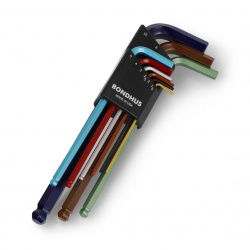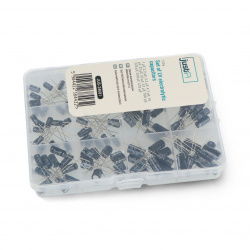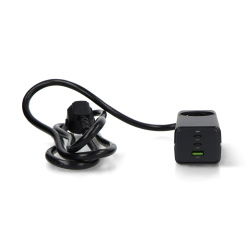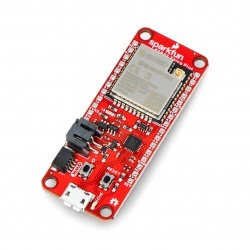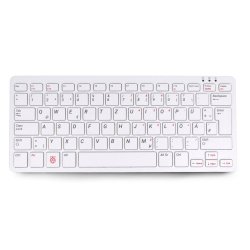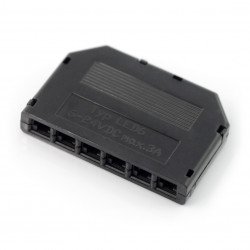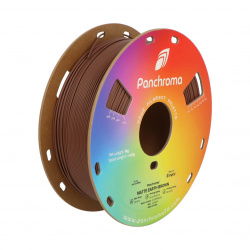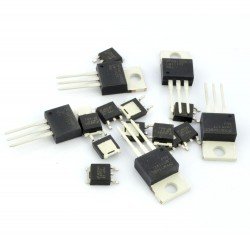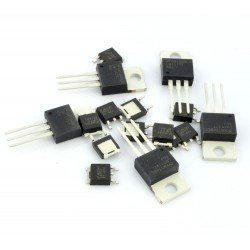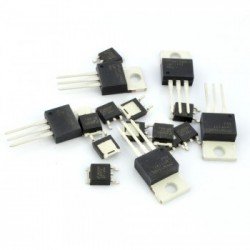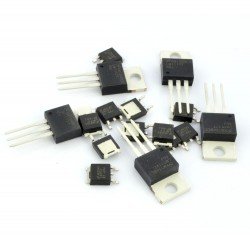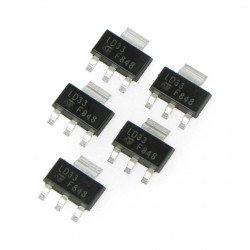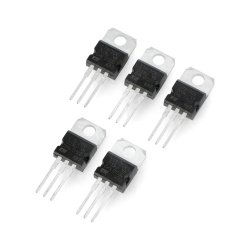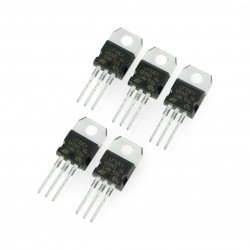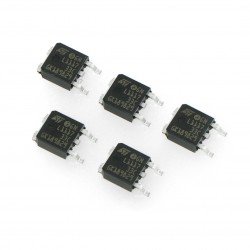A linear stabilizeris a simple electronic component used to stabilize the voltage. The main function of linear stabilizer is to regulate the output voltage to a certain level we want to get. Electronics could not do without this element, as it is very often used to stabilize supply voltages.
Linear stabilizers
Linear voltage regulator 5V L7805ABV - THT TO220
The stabilizer is used to supply power to logic circuits supplied with 5 V. Maximum output current is 1 A.Linear voltage regulator 5V L7805CV - THT TO220 - 5 pcs.
Stabilizer used to supply logic systems supplied with 5 V. The maximum output current is 1.5 A. The product is sold for 5 pieces.Linear voltage regulator LDO 3,3V LM1117MP - SMD SOT223 - 5pcs
Low-Dropout linear stabilizer. Output voltage: 3,3V. Maximum output current: 0.8A. Housing: SOT223 . Includes 5 stabilizers.Linear voltage regulator 12V L7812CV - THT TO220 - 5pcs
Linear regulator 12 V, 1,5 A. Housing: TO-220. price per 5 pieces.Linaer voltage regulator LDO 3,3V LF33CV - THT TO220 - 5pcs
The LDO LF33CV stabilizer is used to supply circuits operating at 3.3 V. Maximum output current is 0.5 A. Price for 5 pcs.Linear voltage regulator LDO 3,3V LD1117A - THT TO220 - 5 pcs
Low-Dropout linear stabilizer. Output voltage: 3,3 V. Maximum output current: 0.95 A. TO220 housing. Sold for 5 pieces.Linear voltage regulator 9V L7809CV - THT TO220
Stabilizer used to supply logic systems supplied with 9 V. The maximum output current is 1 A.Linear voltage regulator LDO 5V LM1117T-5.0 - THT TO220
Low-Dropout linear stabilizer. Output voltage: 5 V. Maximum output current: 1.5 A. TO220 housing.Linear voltage regulator 8V LM7808 - THT TO220
LM7808CV linear regulator. Output voltage: 8 V, maximum current: 1 A. Housing: TO-220 (THT).Linear voltage regulator LDO 3,3V LM1117DT - SMD TO252 - 5pcs.
Low-Dropout linear stabilizer. Output voltage: 3,3 V. Maximum output current: 0.8 A. Housing: TO252 (DPAK).Linear voltage regulator kit - 5V-24V TO220 - 14pcs
Set of 14 popular regulators in TO220 housing.Linear voltage regulator 5V L78M05CDT - SMD TO252 - 5pcs.
The stabilizer is used to supply power to logic circuits supplied with 5 V. Maximum output current is 0,5 A. Housing: TO252 (DPAK).Linear voltage regulator 3,3V LDO SPX5205M5-L-3-3/TR - SMD SOT-23
Voltage stabilizer 5-pin in SOT-23 housing, output voltage is 3.3 V, output current 150 mA. It can be used in battery power systems, radio control systems, portable computers,...See also
Linear stabilizers for simple voltage regulation
Linear stabilizers are the simplest voltage regulation systems to implement. Most components of this type require only two external capacitors to operate to filter the input and output voltage. The capacity of these elements depends on the operating current of the stabilizer and the bandwidth of its feedback loop. In the category of voltage regulators and converters you can also find step-up and step-down converters, which increase or decrease the output voltage, respectively, as well as transformers . We also offer high-power converters used, among others, passenger cars and campers.
Simple principle of operation of an integrated linear stabilizer - how does a voltage stabilizer work?
A voltage regulator works by using a feedback loop to stabilize the voltage . By comparing the actual output voltage with the established reference voltage on the error amplifier, the system controls the actuator, most often a MOSFET transistor. Any voltage differences are amplified and used for control in such a way as to reduce the output voltage error.
This creates an electronic feedback control loop. Due to the nature of the feedback, these systems are called linear stabilizers, as all components of the feedback path are linear systems.
Due to the use of a transistor to regulate the voltage by controlling the voltage drop across this element, the voltage supplying the stabilizer (i.e. the input voltage) must be greater than the output voltage.
Stabilizers - Electronic components that are easy to implement
The implementation of linear stabilizers in electronic systems is extremely simple , due to the fact that currently available modern voltage regulators are highly integrated integrated circuits, containing in their structure all the necessary elements - a regulatory element (power transistor), an error amplifier and a reference voltage.
Thanks to this, the implementation of these systems does not require tedious calculations or experimental selection of the values of electronic components accompanying the system.
Voltage stabilizer - Easy selection of appropriate components
Due to the simplicity of the implementation of integrated voltage regulators , the selection of external components for the system is extremely simple . Most often, a linear stabilizer requires only two associated passive electronic components - an input capacitor and an output capacitor . The capacitance at the input of the system is intended to filter the supply voltage for the linear stabilizer.
It is assumed that the input capacitor of the linear stabilizer should have a capacity of 1000 microfarads per 1 ampere of current flowing. It is a good idea to place a capacitor with a low equivalent series resistance (ESR) here.
To reduce the filter impedance, this capacitance can be divided into several capacitances, for example, 1000 μF, 1 μF, 100 nF and 1 nF connected in parallel. This will result in a low-impedance filter over a wide frequency range, which will certainly improve the quality of the output voltage from the voltage regulator, i.e. it will allow you to obtain a stable output voltage.
The output capacitor is selected in accordance with the guidelines in the catalog card. This element is part of the feedback loop in the linear stabilizer, which affects its bandwidth, therefore it is necessary to select an electronic element with such a capacity that it does not exceed the feedback band of the voltage regulator, which is also determined by other elements included in the structure of the system. integrated circuit.
Typically, the data sheet for this electronic component indicates what the minimum output capacitance is for a given linear stabilizer. The Botland store's assortment also includes efficient and reliable mains voltage stabilizers available in the plug-in power supplies category. The maximum output current and input voltage range depend on the specific device model. Mains power supplies provide voltage whose level is adjusted to specific power consumers.
Preprogrammed and configurable voltage stabilizers
Most linear stabilizers available on the market are characterized by a factory-set output voltage level. This means it is possible to achieve a stable direct or alternating voltage (depending on the mode of operation of the stabilizer). However, some voltage regulators are also available in an externally programmable version, i.e. one where the output voltage can be configured to obtain the desired nominal voltage level.
Most often, the configuration of this electronic element is done by adding two resistors to the system in a voltage divider system. The voltage from the output is then fed to a special measurement input of the linear stabilizer and then to the error amplifier and the regulation system. The exact mathematical relationships between the resistances of these resistors and the output voltage can be found in the data sheet of a given voltage regulator.
Linear stabilizers - FAQ
In electronics, a linear stabilizer is a system used to maintain a constant voltage. The resistance of the stabilizer varies depending on the input voltage and load, resulting in a constant output voltage. The stabilizer works like a variable resistor .
The three pins from the stabilizer serve as input, ground and output. You can check the operation of the stabilizer using capacitors , a 9V battery and a multimeter acting as a voltmeter in this case.































































































































































































































































































































